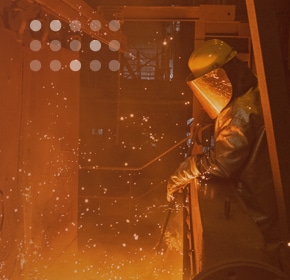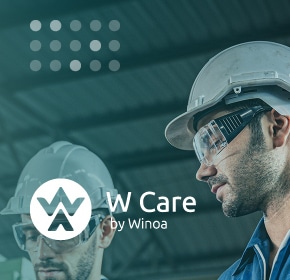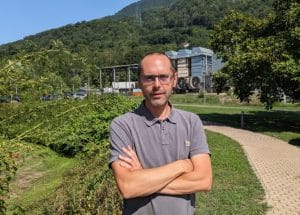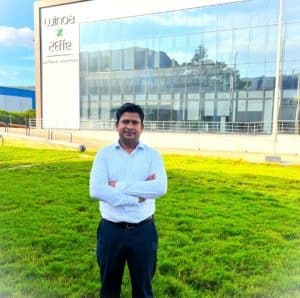Introducing Prasertsri Saithong and the Winoa Thailand plant
Question: Can you introduce yourself and describe your site?
Prasertsri Saithong: My name is Prasertsri Saithong, I am the Plant Manager at Winoa Thailand. I am responsible for managing daily operations, overseeing quality control, ensuring equipment maintenance, and managing Health and Safety compliance to ensure all operations adhere to safety regulations.
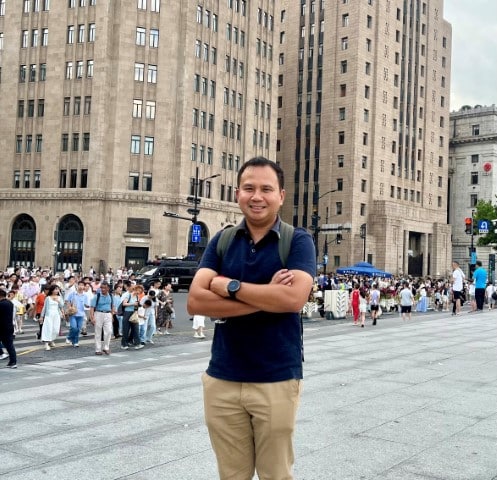
Winoa Thailand was established on April 18, 1988, with a production capacity of approximately 20,000 tons per year. Our facility includes two 2-ton induction furnaces, one unit of Gas Quenching, six units of electric quenching, five tempering furnaces, and seven crushers. We operate across three shifts and have a total of 61 employees.
In 2024, we launched two key energy-saving initiatives: a Solar Rooftop System with a capacity of 239 kWh, producing approximately 340,000 kWh of electricity annually, saving €37,000 per year, and the installation of new gas burners (Self-recuperative burners) for the gas quenching furnace, reducing gas consumption by 34%, saving €113,000 per year. These projects have significantly improved our plant’s energy efficiency and sustainability.
Health and safety challenges at Winoa Thailand
Question: What are the specific health and safety challenges of your site, and how do you manage them?
Prasertsri Saithong: From my perspective, the key health and safety challenge at Winoa Thailand is changing employee behavior and building a strong safety awareness. Our goal is to elevate the team’s safety culture, but this transformation requires time and persistence.
“Building a strong safety culture isn’t just about rules; it’s about changing behaviors and attitudes.”
To address these challenges, I have implemented several initiatives. One of the most effective is Job Safety Analysis (JSA), which helps the team understand the safety risks associated with various tasks. Additionally, our regular Safety Walkthroughs allow us to identify and address unsafe conditions in the workplace and continue reducing potential hazards. Continuous safety training is also crucial for improving the team’s skills and knowledge.
Another significant challenge is the manual handling of our packing process. Workers are responsible for moving and stacking 25 kg bags, totaling about 500 bags per day, which increases the risk of back injuries. We are exploring the possibility of implementing robots to replace manual labor to reduce these risks and improve efficiency.
If you use a shot blasting machine, ensuring the safety of your operations is critical. Download our free guide, “Health and Safety in Blasting Operations,” to learn best practices and reduce risks in your facility.
Recent safety improvements and results
Question: Can you share a recent situation where a safety improvement was made at your site? What were the results?
Prasertsri Saithong: At Winoa Thailand, we have successfully implemented Job Safety Analysis (JSA) along with targeted training for employees. This approach helps the team recognize potential risks at each step of their tasks and understand the necessary actions to prevent hazards before they begin work.
“Achieving zero Lost Time Injuries (LTI) is not just a milestone; it’s a commitment to a safer future.”
Additionally, our Safety Walkthroughs have encouraged the team to identify potential risks and find solutions to improve conditions. As a result of these efforts, we achieved zero Lost Time Injuries (LTI) in 2023 and year-to-date in 2024, and we are committed to maintaining this record in the future.
Applying safety principles in daily life
Question: Which safety rule or good practice that you follow at work do you also use in your daily life (at home, during transport, with your family)?
Prasertsri Saithong: The key safety rule I follow, both at work and in daily life, is “Thinking before acting.” We must always stop and think about safety before starting any task. Taking a moment to ensure our actions are safe for ourselves and others is crucial.
For example, when a lightbulb at my house wasn’t working, I decided to replace it. Before acting, I thought through the risks and used a proper ladder, ensuring it was stable. I also turned off the light switch to avoid electrical shock. By thinking before acting, this proactive approach to safety reduces the likelihood of mistakes, injuries, or accidents.

This practice not only promotes a culture of responsibility but also helps to build a safe and efficient work environment, where everyone is committed to looking out for their own well-being and that of their colleagues.
Thank you, Prasertsri Saithong, for sharing your experience and insights on health and safety. We hope this interview has provided information and inspiration regarding the importance of safety culture in Winoa.

